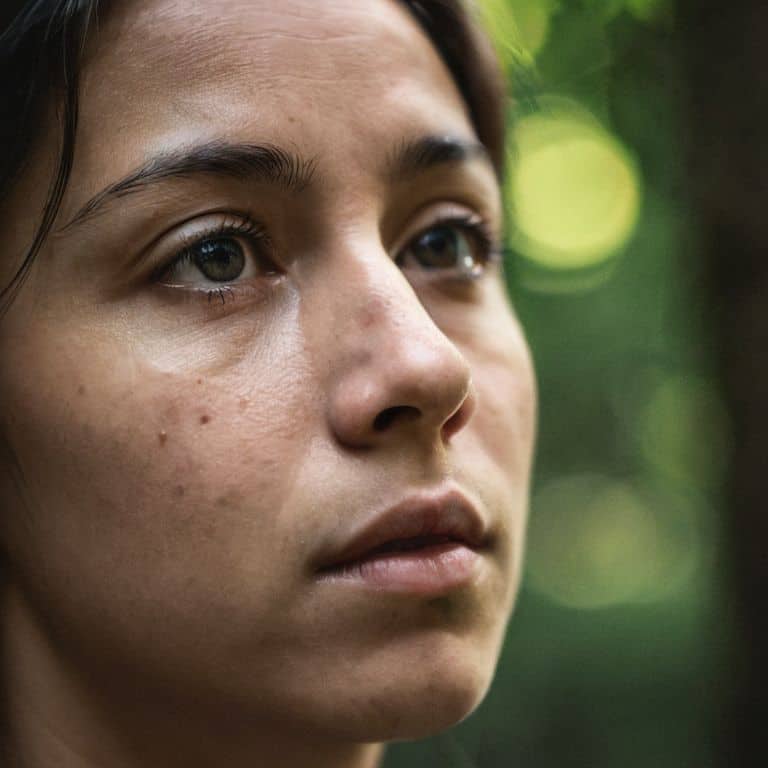I still remember the first time I realized that the art of active listening wasn’t about following some formulaic checklist, but about truly hearing the cracks in someone’s voice. I was on a long-distance trek, and a fellow hiker shared with me his struggles with anxiety. As I listened, I felt the weight of his words, the desperation in his tone. It was a moment that taught me the value of empathetic listening, of being present in the midst of someone’s pain. But what I’ve noticed is that most advice on the art of active listening focuses on quick fixes and superficial techniques, rather than the gritty, hard work of truly understanding another person.
As someone who’s spent years restoring old motorcycles and learning from my own mistakes, I believe that true connection is forged in the imperfections, not in some polished, idealized version of communication. In this article, I’ll share with you my own experiences and insights on the art of active listening, without the fluff or clichés. I’ll show you how embracing the imperfections and listening to the cracks can transform the way we hear each other, and build stronger, more meaningful relationships. My goal is to offer you a different kind of inspiration, one that’s rooted in the messy, beautiful reality of our shared human experience, and to provide you with practical, experience-based advice that you can apply to your own life.
Table of Contents
- Cracking the Code of Listening
- Mastering the Art of Active Listening
- Conflict Resolution Through Effective Communication
- Intelligence in the Cracks Improving Emotional Awareness
- Listening to the Cracks: 5 Tips to Transform Your Connections
- Echoes in the Cracks: Key Takeaways
- Listening to the Silence
- Listening to the Cracks: A Conclusion
- Frequently Asked Questions
Cracking the Code of Listening

As I reflect on my experiences with photography, I realize that capturing the essence of a moment requires more than just a good camera. It demands that I be fully present, attuned to the subtleties of light and shadow. Similarly, in our personal and professional relationships, empathy in relationships is crucial for building trust and understanding. When we truly listen to others, we begin to pick up on verbal and nonverbal cues that reveal their thoughts and feelings.
In my work as a documentary photographer, I’ve learned to approach each subject with a willingness to listen and learn. This mindset has taught me that effective communication techniques are not just about conveying information, but also about creating a space for others to express themselves. By doing so, we can foster deeper connections and resolve conflicts more effectively. I recall a particularly challenging project where I had to navigate conflict resolution strategies to bring together individuals with differing perspectives. The experience was daunting, but it ultimately led to a more nuanced understanding of the issues at hand.
As I continue on my journey, I’m reminded that improving emotional intelligence is a lifelong process. It requires us to be vulnerable, to acknowledge our own flaws and imperfections. By embracing this mindset, we can become more attentive and responsive listeners, capable of picking up on the subtle cracks in the conversation that reveal the true depths of human emotion. In these moments, we can discover new avenues for connection and growth, and active listening in the workplace can become a powerful tool for building stronger, more resilient teams.
Beyond Words Decoding Verbal and Nonverbal Cues
As I reflect on my experiences as a documentary photographer, I’ve come to realize that truly hearing someone means picking up on the subtle cues that often go unnoticed. It’s not just about the words being spoken, but the tone, the pace, and the pauses in between.
In my work, I’ve learned to read between the lines, to sense the emotions and intentions that lie beneath the surface of a conversation. This skill has allowed me to capture authentic, unguarded moments through my lens, and it’s a skill that can be applied to any interaction, whether personal or professional.
Embracing Imperfection Empathy in Relationships
As I reflect on my own experiences with active listening, I’ve come to realize that empathy is the foundation upon which meaningful relationships are built. It’s about being willing to sit in the uncomfortable silence with someone, to acknowledge their pain and their struggles, and to validate their emotions.
In embracing the imperfections of others, we open ourselves up to the possibility of deeper connection and understanding. By doing so, we create a safe space for others to be their authentic selves, without fear of judgment or rejection.
Mastering the Art of Active Listening

As I reflect on my experiences with effective communication techniques, I’m reminded of the countless times I’ve seen relationships transformed by a simple act of empathy. It’s not just about hearing the words, but also about picking up on verbal and nonverbal cues that can make or break a conversation. I think back to my days as a documentary photographer, where I had to navigate complex social situations and conflict resolution strategies to get the shot. It taught me that true connection is about being present, not just physically, but also emotionally.
In my work, I’ve found that improving emotional intelligence is key to building stronger relationships. It’s about being aware of your own emotions and how they impact your interactions with others. When we take the time to listen deeply, we begin to understand the nuances of human communication. It’s not always easy, but it’s worth it. I recall a particularly challenging shoot where I had to use active listening to diffuse a tense situation. By doing so, I was able to build trust with my subjects and capture a more authentic story.
As I look back on those experiences, I’m struck by the power of empathy in relationships. It’s what allows us to connect with others on a deeper level, to understand their struggles and imperfections. By embracing these imperfections, we can create a safer, more supportive environment for open communication. This, to me, is the heart of empathy in relationships.
Conflict Resolution Through Effective Communication
When we’re in the midst of a heated argument, it’s easy to get caught up in the emotional undertow and lose sight of what’s really being said. But effective communication is key to resolving conflicts in a way that strengthens our relationships, rather than tearing them apart. By learning to navigate these difficult conversations with empathy and understanding, we can begin to build bridges instead of walls.
In the end, conflict resolution is not about winning an argument, but about finding common ground and moving forward together. It requires a willingness to listen deeply, to acknowledge the other person’s perspective, and to work collaboratively towards a solution that works for everyone involved.
Intelligence in the Cracks Improving Emotional Awareness
As I reflect on my experiences with restoring old motorcycles, I’ve come to realize that emotional awareness is the spark that ignites true understanding. It’s the ability to recognize the subtle cues, the unspoken words, and the underlying emotions that drive our interactions. Just as a photographer must be attuned to the play of light and shadow, we must be attuned to the nuances of human emotion.
In my own journey, I’ve found that paying attention to the cracks, the imperfections, and the vulnerabilities is where true intelligence lies. By embracing our own flaws and weaknesses, we can develop a deeper empathy for others, and foster more meaningful connections.
Listening to the Cracks: 5 Tips to Transform Your Connections

- Shut up and listen, really listen, to what’s being said, even when it’s hard, and especially when it’s uncomfortable
- Pay attention to the spaces between words, the pauses, and the body language – they often speak louder than the words themselves
- Let go of the need to respond immediately and instead focus on absorbing what the other person is saying, like a photographer waiting for the perfect shot
- Embrace the imperfections and the awkward moments – they’re often the doorways to deeper understanding and connection
- Practice self-reflection and acknowledge your own biases and emotions, so you can show up more fully and listen more deeply to others, just as you would fine-tune a lens to capture the beauty in the brokenness
Echoes in the Cracks: Key Takeaways
Embracing the imperfections in ourselves and others is crucial for genuine connection – it’s in the cracks that we find the depth of human experience and the true power of active listening
Effective communication is not about mastering a set of techniques, but about cultivating empathy and understanding through a willingness to listen to the unspoken, the uncomfortable, and the uncertain
By acknowledging and working through our own flaws and biases, we can develop a more nuanced and compassionate approach to listening, one that honors the complexity and beauty of the human story
Listening to the Silence
The most profound truths are often whispered in the pauses, not proclaimed in the noise – it’s in these quiet cracks that we discover the true art of listening.
Rowan Croft
Listening to the Cracks: A Conclusion
As I reflect on the journey of mastering the art of active listening, I’m reminded that it’s not just about hearing the words, but about embracing the imperfections that make us human. We’ve explored the importance of decoding verbal and nonverbal cues, empathy in relationships, and conflict resolution through effective communication. Through it all, I’ve come to realize that true connection is forged in the cracks of our imperfections, where we find the courage to be vulnerable and honest with each other.
So, as you continue on your own path of discovery, I encourage you to listen to the cracks, to the whispers of uncertainty and doubt that often go unspoken. For it’s in these hidden places that we’ll find the true beauty of human connection, and the inspiration to keep moving forward, even when the road ahead seems uncertain. By embracing our imperfections, we can create a more authentic, compassionate, and meaningful world, one conversation at a time.
Frequently Asked Questions
How can I balance the need to listen actively with the urge to respond or fix a problem immediately?
That’s the paradox of active listening – we want to fix, to respond, to make it better. But sometimes, the best thing to do is nothing. Just sit in the silence, and let the other person’s words sink in. It’s in those moments that true understanding is born, and our urge to respond becomes a thoughtful, considered one, rather than a knee-jerk reaction.
What role does self-awareness play in active listening, and how can I cultivate it in my own relationships?
Self-awareness is the backbone of active listening. It’s about recognizing your own biases and emotions, so you can set them aside and truly hear the other person. For me, it’s like adjusting the lens on my camera – you gotta know your own limitations to capture the real picture. Cultivate it by practicing mindfulness, acknowledging your triggers, and being honest with yourself.
Can active listening be practiced in everyday conversations, or is it more suited to formal therapy or conflict resolution settings?
Active listening isn’t just for therapists or conflict resolution – it’s for everyday conversations, too. I’ve found that when I truly listen to someone, whether it’s a friend, family member, or stranger, it shifts the entire dynamic. It’s about being present, not just hearing words, but feeling the weight of what’s being said, even in casual conversations.
